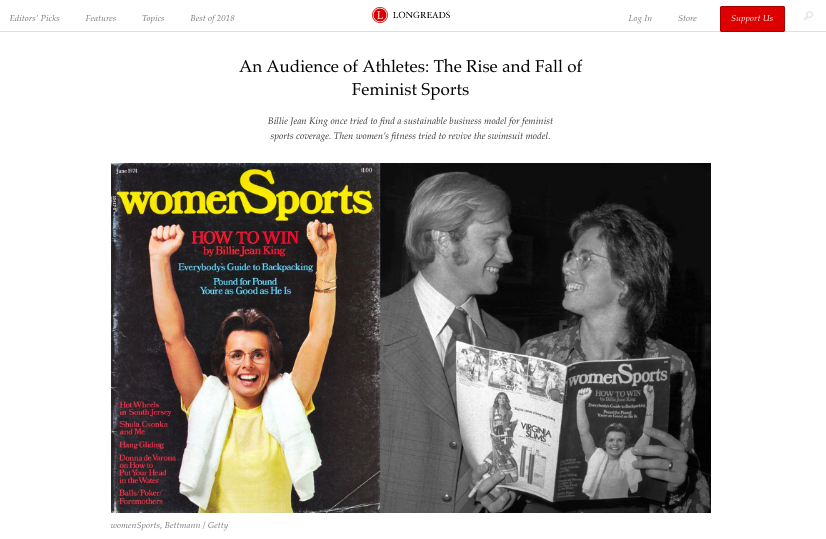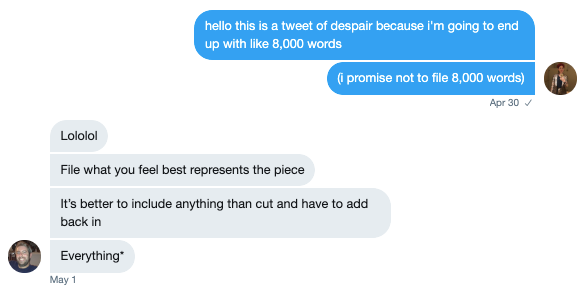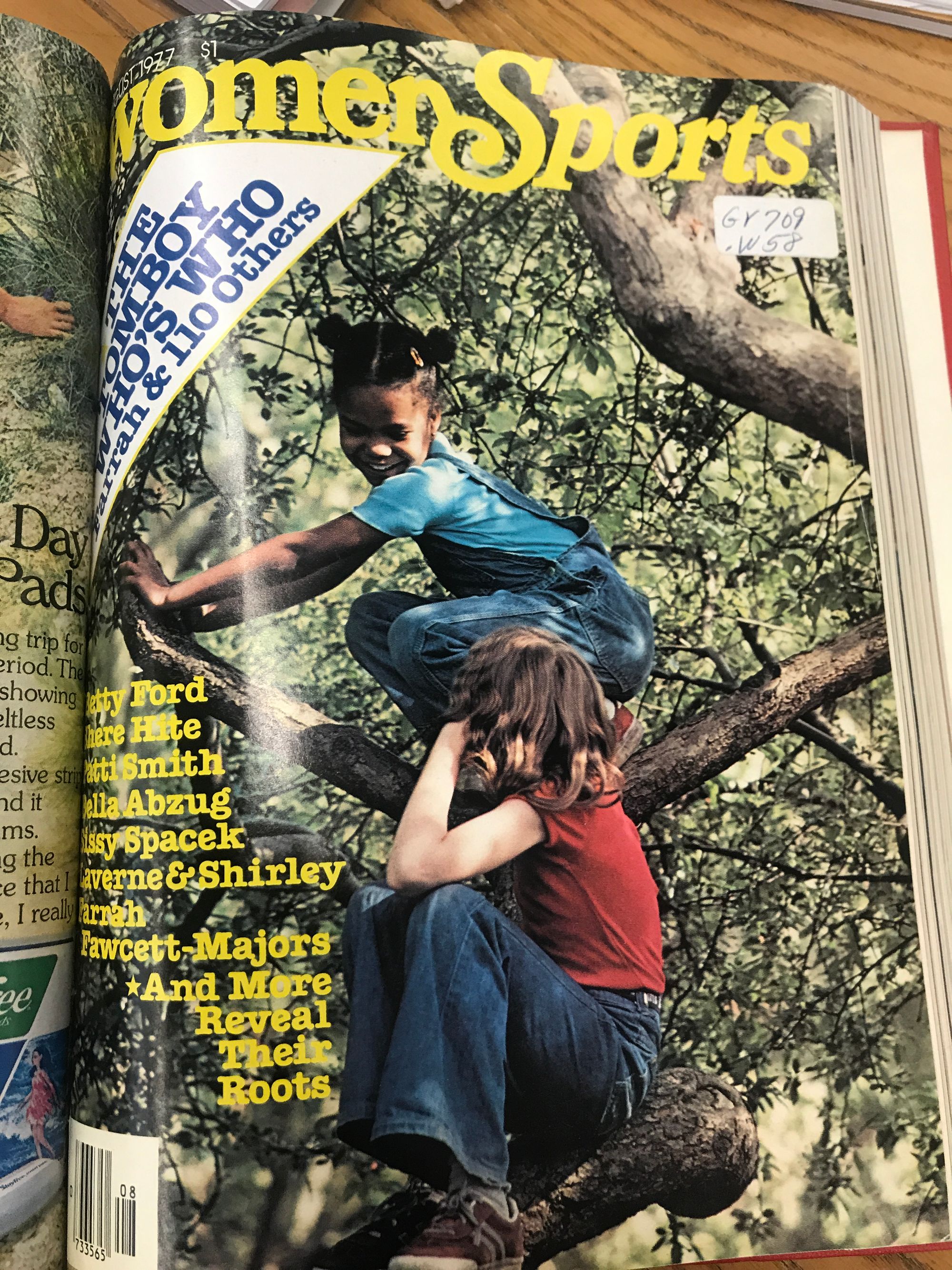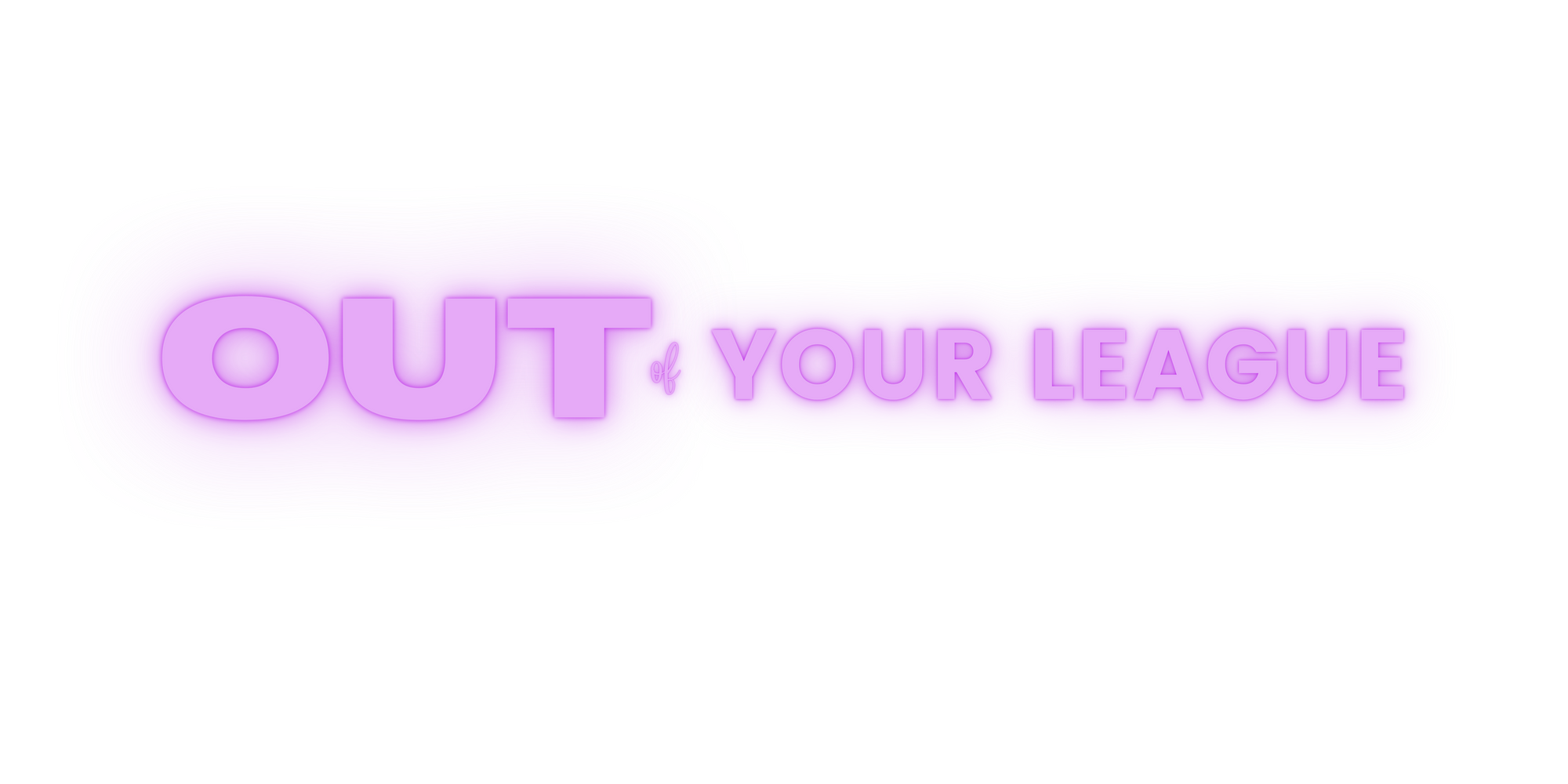in the story of a feminist sports magazine, I found a story of friendship
on the joys of unexpected nuggets in your reporting

Three months ago when I began working on a story about womenSports magazine, the Billie Jean King-owned women’s sports magazine that published from 1974-1978, I had no idea that it would drop the same week The Twitter Discourse on sports Twitter was having all sorts of arguments about women’s sports coverage.
Into the conversations about the “right” way to provide women’s sports coverage and whether writing about women’s sports is a consolation prize, my piece drops, one that places these current conversations into historical context. Surprise! Turns out that nothing we’re talking about is new.

Let’s look at what we’re talking about this week: The Athletic announced that they were launching a new WNBA vertical and hiring beat writers for all 12 teams, something that has never been done before. This incredibly exciting news was met with its fair share of criticism. The Athletic is not new to criticism; when it launched, many people (including myself) rightly noted that there was no women’s sports coverage. The Athletic promised it would be coming in time, but to those of us who have been hearing some version of that forever, we weren’t very optimistic.
So I was pleasantly surprised to see that the WNBA vertical was added alongside their recent addition of a full-time woso/NWSL writer and a pretty decent amount of whcky content, as well. I noted as much on Twitter. But a lot of people felt like The Athletic didn’t deserve credit for trying, because they way they saw it, the soccer coverage wasn’t good enough.
And I get it. We’re tired of being tossed scraps and then told we should be grateful. We all want to see our favorite sports get better coverage. We want publications to do better. And we should definitely keep pushing them to do so. But at the same time, change doesn’t happen overnight. And historically (to come back around to my story), women’s sports coverage has had trouble finding its audience. There are a lot of reasons for that (you should read the story!), but what it means for people who want to try to take it on is that often, they need to see some sort of proof that the demand for the content is there before they jump in with both feet.
That does not mean it is right. But it does mean that if we “cancel” or throw out publications who are trying simply because they’re not doing it the way we want them to do it, we’ll never get the coverage we’re seeking because publications will continue to think there’s no audience for it. And if there continues to be no audience for it in publishers’ minds, it will continue to be devalued and paid less than comparable men’s sports beats (which is the point that was attempting to be made in yesterday’s debate, but which got quite muddled).
So let’s look at womenSports, shall we?
This is a behemoth of a story. Shoutout to my editor, Matt Giles, who is clearly a masochist because when I messaged him in a panic because my story was a bazillion words long, he encouraged me to just file the whole thing.

(We also recorded a podcast about it, so you should listen. You can hear some of my interview with Billie Jean King.)
I approached this story as an oral history, because there’s actually very little reporting on the publication. There was plenty of stuff from the few years it ran, but no one had really sat down with the people involved after it folded and asked them to talk about it in-depth. There’s a chapter devoted to the mag in Susan Ware’s book Game, Set, Match: Billie Jean King and the Sports Revolution, but Ware didn’t interview any primary sources for the book, instead relying just on archival material.
I believe that this is the reason I was able to interview so many of the major players for this story. They had never really been tapped to talk about it before, at least not in a really long time, and they wanted to. They are all incredibly proud of the work they did with that publication, even 40 years later. The most touching piece of reporting that I found by doing that, and something that I wanted to highlight in this piece very explicitly, is the friendship and bond the inaugural staff of womenSports formed. They all walked out on their job together, in solidarity with each other. Their relationships continue to the present day. Buried in the history of this groundbreaking magazine, I found a really sweet story of loyalty and friendship that I had not expected.
The first iteration of this draft talked to all the big dogs: Billie Jean (an interview that took me over two months to get!), Larry, Jim Jorgensen, Eva Auchincloss. These were the folks in the upper echelons of the magazine. I’d struggled to get in touch with the writers and editors who had been there, but after writing a draft, it was clear that the POV of the folks doing the actual work on the magazine was missing (shoutout to EIC Rosalie Muller Wright who, when I got on the phone with her and mentioned I’d had trouble finding all their contact info, said, “Did you Google us? We're all Googly.”). I’m proud that this piece does what most reporting on the publication has not: it centers the stories of the folks in the trenches instead of relying just on the perspective of the publishers/big names.
The challenge with a story like this is that when you talk to one person, they suggest you talk to another, who suggests you talk to another. It’s hard to know where to draw the line and when to stop doing interviews, because you never know whose perspective will end up being valuable and in order to paint a true picture of what happened, you need to have all sides of the story. Each person brings a different piece of the puzzle to the table and, eventually, when everyone has been tapped, the puzzle should be mostly complete.
But there also comes a point when you just have to stop doing interviews. I was not writing a book about womenSports (though I probably could at this point) so I had to just call it. For an article, even a longform one, there is such a thing as oversourcing and over-reporting, and I found that place with this one. I didn’t even get to dive into the current state of women’s sports coverage, to look at sites like espnW, to dive into the studies and analysis. There just wasn’t enough room. I had to say “when.”
I do want to share one tidbit from my reporting, probably my favorite anecdote: I interviewed the incomparable Jane Leavy, one of my idols, a woman who blazed trails in this field. Without her work, mine would not exist. Her first ever staff writing job was at womenSports in 1976. She was so tickled to talk about it, and sometimes it does pay to “meet” your idols because, in this case, she was lovely. She spent almost an hour on the phone with me after our official interview had ended helping me try to track down former colleagues of hers and Googling things for my story.
While we chatted, she brought up “The Tomboy Issue,” the highlight of her time at the magazine. What other magazine would let a fresh-out-of-college writer conceptualize an entire issue? She decided to see if she could find anything about the issue online, and she discovered it for sale on Amazon. She purchased herself a copy, and emailed me when it arrived. She now owns a copy of the issue she worked on 40 years ago.

And don’t miss the podcast!
If you want to hear portions of my interview with Billie Jean, as well as a conversation between my editor, Matt, and me, check out the Longreads podcast.
